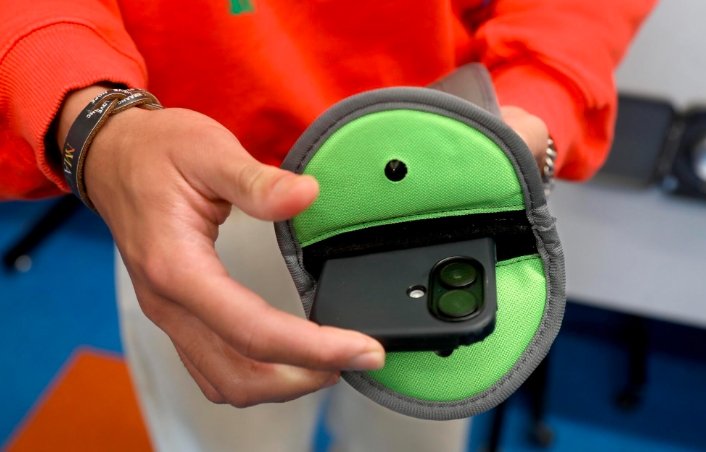As the 2025-26 school year kicks off on September 4, the City School District of Albany is rolling out strict new procedures to limit cell phone use in schools. This move aligns with a statewide mandate from Governor Kathy Hochul, aimed at reducing distractions and boosting focus in classrooms across New York.
Statewide Push for Distraction-Free Learning
New York has become the largest state to enforce bell-to-bell restrictions on smartphones in K-12 schools, a policy that took effect this fall. Governor Hochul announced the initiative earlier this year, highlighting concerns over how devices affect student mental health and attention spans.
The rules require students to keep phones and other personal electronics out of sight during the entire school day. This comes amid growing evidence that excessive screen time links to higher anxiety and lower academic performance among teens. Recent studies from education experts show that schools with similar bans have seen up to a 15 percent rise in student engagement.
Many districts, including Albany, are adapting these guidelines to fit local needs. The policy allows exceptions for medical reasons, translation services, or teacher-approved educational activities. Parents have mixed reactions, with some praising the focus on learning while others worry about emergency communication.

How Albany District Handles the Ban
In Albany, middle and high school students must lock their cell phones and devices in secure pouches upon arrival. These pouches stay sealed until the end of the day, when students unlock them before heading home.
The district provides these pouches free of charge, ensuring every student has one. This system aims to make enforcement simple and consistent. At the Tony Clement Center for Education, existing procedures remain in place, offering a bit more flexibility based on past practices.
For elementary students, the rules are straightforward: phones must stay off and stored away all day. Each school sets its own storage methods, like cubbies or backpacks, to keep things organized.
- Key Benefits: Reduces classroom disruptions and encourages face-to-face interactions.
- Potential Challenges: Some families rely on phones for coordination, but schools offer office lines for urgent messages.
- Enforcement Tips: Staff will monitor compliance, with progressive discipline for repeated issues.
This approach builds on successful pilots in other New York districts, where pouch systems have cut phone-related incidents by over 20 percent.
Exceptions and Support for Families
Not every student faces a total ban. The policy includes carve-outs for those with health needs, such as diabetes monitoring apps, or for non-native English speakers using translation tools.
Schools in Albany also support family caregiving situations, where a student might need quick access for emergencies. Teachers can approve device use for specific lessons, like research projects.
To help parents, the district promotes calling school offices for messages. They use tools like Language Line for translation, ensuring clear communication. This setup addresses common concerns raised in community feedback sessions held over the summer.
Recent data from similar policies in states like California shows that 70 percent of parents support bans once they see improved focus in their kids. Albany officials expect similar positive outcomes here.
Impact on Students and Teachers
Educators in Albany report excitement about the change, saying it will create calmer classrooms. One middle school teacher noted that past phone distractions often derailed lessons, leading to lost instructional time.
Students, however, have varied views. Some teens argue for limited access during breaks, while others welcome the break from social media pressures. A recent survey of New York high schoolers found that 60 percent admit phones hurt their concentration.
The policy ties into broader trends, like rising mental health support in schools. With youth anxiety rates climbing 25 percent since 2020, experts say limiting screens during school hours can help.
| Aspect | Details | Expected Outcome |
|---|---|---|
| Middle/High School | Locking pouches issued daily | Fewer distractions, higher focus |
| Elementary | Phones off and stored | Simpler enforcement for younger kids |
| Exceptions | Medical, educational use | Balanced access for needs |
| Parent Contact | Call school office | Quick message relay |
This table outlines the core elements, showing how the district tailors the statewide rule.
Looking Ahead to a Focused School Year
As Albany joins other New York districts in this shift, early signs point to smoother classrooms and better learning. The policy reflects a national conversation on tech in education, with more states considering similar steps.
Officials will monitor the rollout and gather input for adjustments. By mid-year, they plan to review data on attendance and grades to measure success.
What do you think about these new cell phone rules? Share your thoughts in the comments below or pass this article along to other parents and educators for their take.


















